|
by David Hatcher Childress (source: Technology of the Gods - The Incredible Sciences of the Ancients p 147-209)
Vimanas are mentioned even today in standard Indian literature and media reports. An article called “Flight Path” by the Indian journalist Mukul Sharma appeared in the major newspaper The Times of India on April 8, 1999 which talked about vimanas and ancient warfare: according to some interpretations of surviving texts, India’s future it seems happened way back in the past. Take the case of the Yantra Sarvasva, said to have been written by the sage Maharshi Bhardwaj.
In it Bhardwaj describes vimana, or aerial aircrafts, as being of three classes:
Of special concern among these were the military planes whose functions were delineated in some very considerable detail and which read today like something clean out of science fiction.
For instance, they had to be:
Notwithstanding the fact that such contraption would resemble a cross between an American state-of-the-art Stealth Fighter and a flying saucer, does it mean that air and space travel was well known to ancient Indians and airplanes flourished in India when the rest of the world was just learning the rudiments of agriculture?
Aerial battles and chases are common in ancient Hindu literature. What did these airships look like? The ancient Mahabharata speaks of a vimana as “an aerial chariot with the sides of iron and clad with wings.”
The Ramayana describes a vimana as a double-deck, circular (cylindrical) aircraft with portholes and a dome. It flew with the “ speed of the wind”, and gave forth a “melodious sound” The ancient Indians themselves wrote entire flight manuals on the care and control of various types of vimanas. The Samara Sutradhara is a scientific treatises dealing with every possible facet of air travel in a vimana. There are 230 stanzas dealing with construction, take-off, cruising for thousands of miles, normal and forced landings, and even possible collusions with birds!
These sources are now lost. Vimanas were kept in Vimana Griha, or hanger, were said to be propelled by a yellowish-white-liquid, and were used for various purposes. Airships were present all over the world. The plain of Nazca in Peru is very famous for appearing from the high altitude to be a rather elaborate, if confusing airfield. Some researchers have theorized that this was some sort of Atlantean outpost.
It is worth nothing that Rama Empire had its outposts: Easter Island, almost diametrically opposite to Mohenjo-Daro on the globe, astonishingly developed its own written language, an obscure script lost to the present inhabitants, but found on tablets and other carvings.
This odd script is found in only one other place in the world: Mohenjo-Daro and Harappa.
Aerial Warfare in Ancient India
The ancient Indian epics go into considerable detail about aerial warfare over 10,000 years ago.
So much detail that a famous Oxford professor included a chapter on the subject in a book on ancient warfare!. According to the Sanskrit scholar V.R.Ramachandran Dikshitar, the Oxford Professor who wrote “War in Ancient India in 1944 “, no question can be more interesting in the present circumstances of the world than India’s contribution to the science of aeronautics. There are numerous illustrations in our vast Puranic and epic literature to show how well and wonderfully the ancient Indians conquered the air.
To glibly characterized everything found in this literature as imaginary and summarily dismiss it as unreal has been the practice of both Western and Eastern scholars until very recently. The very idea indeed was ridiculed and people went so far as to assert that it was physically impossible for man to use flying machines.
But today what with balloons, airplanes and other flying machines, a great change has come over our ideas on the subject.”
Says Dr. Dikshitar,
Dikshitar mentions that in Vedic literature, in one of the Brahmanas, occurs the concept of a ship that sails heavenwards.
Commenting on the famous vimana text the Vimanika Shastra, he says:
Has the World Ended Before?
Charles Berlitz, author of several books, including The Bermuda Triangle, was the grandson of the founder of the world-famous Berlitz schools, wrote:
Professor Dr. Dileep Kumar Kanjilal gave a brilliant lecture with this title to the Sixth Congress of the Ancient Astronaut Society in Munich in 1979. Kanjilal is a professor at the Calcutta Sanskrit College and therefore a leading scholar in Sanskrit.
But if we follow the history of idolatry in India we come across two important works, the Kausitaki and the Satapatha Brahmana, dating from before 500 B.C. and telling us about images of the gods.
The Yujurveda quite clearly tells of a flying machine, which was used by the Asvins (two heavenly twins). The Vimana is simply a synonym for flying machine. It occurs in the Yajurveda, the Ramayana, the Mahabharata, the Bhagavata Purana, as well as in classical Indian literature.
At least 20 passages in the Rig Veda (1028 hymns to the gods) refer exclusively to the flying vehicle of the Asvins. This flying machine is represented as three-storeyed, triangular and three –wheeled. It could carry at least three passengers. According to tradition the machine was made of gold, silver and iron, and had two wings. With this flying machine the Asvins saved King Bhujyu who was in distress at sea.
The writings in the Vaimanika Shastra were rediscovered in 1875. The text deals with the size and the most important parts of the various flying machines.
We learn how they steered, what special precautions had to be taken on long flights, how the machines could be protected against violent storms and lightning, how to make a forced landing and even how to switch the drive to solar energy to make the fuel go further. Bharatvaj refers to no fewer than 70 authorities and ten experts of Indian air travel in antiquity!
The difficulty we are faced with today is basically that the texts mention various metals and alloys which we cannot translate.
We do not know what our ancestors understood by them. In the Amarangasutradhara five flying machines were originally built for the gods Brahma, Vishnu, Yama, Kuvera and Indra. Later there were some additions. Four main types of flying Vimanas are described: Rukma, Sundara, Tripura and Sakuna. The Rukma were conical in shape and dyed gold, whereas the Sundata were like rockets and had a silver sheen.
The Tripura were three-storeyed and the Sakuna looked like birds.
There were 113 subdivisions of these four main types that differed only in minor details. The position and functioning of the solar energy collectors are described in the Vaimanika Shastra. It says that eight tubes had to be made of special glass absorbing the sun’s ray. A whole series of details are listed, some of which we do not understand. The Amaranganasutradhara even explains the drive, the controls and the fuel for the flying machine. It says that quicksilver and ‘Rasa’ were used. Unfortunately we do not yet know what “Rasa’ was.
Ten sections deal with uncannily topical themes such as pilot training, flight paths, the individual parts of flying machines, as well as clothing for pilots and passengers, and the food recommended for long flights.
There was much technical detail: the metals used, heat-absorbing metals and their melting point, the propulsion units and various types of flying machines. The information about metals used in construction name three sorts, somala, soundaalika and mourthwika. If they were mixed in the right proportions, the result was 16 kinds of heat-absorbing metals with names like ushnambhara, ushnapaa, raajaamlatrit, etc. which cannot be translated into English.
The texts also explained how to clean metals, the acids such as lemon or apple to be used and the correct mixture, the right oils to work with and the correct temperature for them. Seven types of engine are described with the special functions for which they are suited and the altitudes at which they work best.
This text is recommended to all who doubt the existence of flying machines in antiquity. The mindless cry that there were no such things would have to fall silent in shame. The ruined sites of Parhaspur have been the scene of ‘divine’ air battles?
Pyramids reminiscent of the Mayan pyramids in the Central American jungles in the center of Parhaspur.
In 1979 a book by David W. Davenport, an Englishman born in India, was published in Italy. Its title was 2000 AC Diztruzione Atomica, Atomic Destruction 2000. BC.
Davenport claimed to have proof that Mohenjo Daro, one of the oldest cities in the history of human civilization, had been destroyed by an atomic bomb.
Davenport shows that the ruined site known as the place of death by archaeologists was not formed by gradual decay. Originally Mohenjo Daro, which is more than 5000 years old, lay on two islands in the Indus.
Within a radius of 1.5 km Davenport demonstrates three different degrees of devastation which spread from the center outwards.
Enormous heat unleashed total destruction at the center. Thousands of lumps, christened ‘black stones’ by archaeologists, turned out to be fragments of clay vessels which had melted into each other in the extreme heat. The possibility of a volcanic eruption is excluded because there is no hardened lava or volcanic ash in or near Mohenjo Daro. Davenport assumed that the brief intensive heat reached 2000 degree C. It made the ceramic vessels melt.
He further says that in the suburbs of Mohenjo Daro skeletons of people lying flat on the ground, often hand in hand were found, as if the living had been suddenly overcome by an unexpected catastrophe. In spite of the interdisciplinary possibilities, archaeology works solely by traditional methods in Mohenjo Daro. They ought to use the former, for it would produce results.
If flying machines and a nuclear explosion as the cause of the ruins are excluded out of hand, there can be no research by enlarged teams with physicists, chemists, metallurgists, etc. As the iron curtain so often falls on sites that are important in the history of mankind, I cannot help feeling that surprising facts endangering existing ways of thinking might and should be discovered.
A nuclear explosion 5000 years ago does not fit into the
scenario?
(source: Chariots of The Gods By Erich Von Daniken p. 56 - 60).
Erich Von Daniken author of the International Bestseller book, Chariots of The Gods, writes:
The Vimanas could cover vast, distances and could travel forward, upward and downward. Enviably maneuverable space vehicles!.
We cannot help noticing that not only is a flying object mentioned again but also that the chronicler talks of a tremendous din.
Even imagination needs something to start off. How can the chronicler give descriptions that presuppose at least some idea of rockets and the knowledge that such a vehicle can ride on a ray and cause a terrifying thunder?.
Certain numerical data in the Mahabharata are so precise that one gets the impression that the author was writing from first-hand knowledge. Full of repulsion, he describes a weapon that could kill all warriors who wore metal on their bodies. If the warriors learned about the effect of this weapon in time, they tore off all the metal equipment they were wearing, jumped into a river, and washed everything they were wearing, and everything they had come in contact with very thoroughly.
Not without reason, as the author explains, for the weapons made the hair and nails fall out. Everything living, he bemoaned, became pale and weak.
The Mahabharata says:
In the Samarangana Sutradhara whole chapters are devoted to describing airships whose tails spout fire and quicksilver.
A passage from the Mahabharata is bound to make us think:
For more on Mahabharata,
refer to chapter on Hindu Scriptures, War in Ancient India and
Yantras.
by G. R. Josyer (excerpts)
Bodhaanada
Scientists say that there are 32 secrets of the working of the Vimana.
A pilot should acquaint himself thoroughly with them before he can be deemed competent to handle the airplane. He must know the structure of the aeroplane, know the means of its take off and ascent to the sky, know how to drive it and how to halt it when necessary, how to maneuver it and make it perform spectacular feats in the sky without crashing.
Those secrets are given in "Rahashya Lahari" and other works by Lalla and other masters, are are described thus:
These 32 secrets the pilot should learn from competent preceptors and only such a person is fit to be entrusted with an airplane, and not others.
Some of these secrets are:
According to Shownaka, the regions of the sky are 5, named,
In these 5 atmospheric regions, there are 5,19,800 air ways traversed by Vimanas of the Seven Lokas or worlds, known as,
Dhundinaatha and "Valalmeeki Ganita" state that Rekha has 7,03,00,800 air routes.
It discusses what kind of food to eat, clothing to wear, metals for vimanas, purification of metals, deals with mirrors and lenses which are required to be installed in the vimanas, mechanical contrivances or yantras and protecting and different types of vimanas.
By G. R. Josyer
International Academy of Sanskrit Research 1973).
Stealth bomber from Shastra
A glass-like material based on technology found in an ancient Sanskrit text that could ultimately be used in a stealth bomber (the material cannot be detected by radar) has been developed by a research scholar of Benaras Hindu University.
Prof M A Lakshmithathachar, Director of the Academy of Sanskrit Research in Melkote, near Mandya, told Deccan Herald that tests conducted with the material showed radars could not detect it. “The unique material cannot be traced by radar and so a plane coated with it cannot be detected using radar,” he said.
The country’s interest in aviation can be traced back over 2,000 years to the mythological era and the epic Ramayana tells of a supersonic-type plane, the Pushpak Vimana, which could fly at the speed of thought.
The shastra also outlines the metallurgical method to prepare an alloy very light and strong which could withstand high pressure.
The academy has also embarked on other projects including ‘Indian concept of Cosmology’ with Indian Space Research Organization, ‘Iron & Steel in Ancient India - A Historical Perspective’ with the Steel Authority of India Limited, and ‘Tools & Technology of Ancient India.’
(source: Stealth
bomber from shastra - deccan herald November 2, 02)
Did You know? Oppenheimer and Atom bomb in modern times
Only seven years after the first successful atom bomb blast in New Mexico, Dr. Robert Oppenheimer (1904-1967) Scientist, philosopher, bohemian, and radical. A theoretical physicist and the Supervising Scientist of the Manhattan Project, who was familiar with ancient Sanskrit literature, was giving a lecture at Rochester University.
During the question and answer period a student asked a question to which Oppenheimer gave a strangely qualified answer:
Charles Berlitz goes on to quote a number of passages from the Mahabharata that describe the impact of a weapon that I suspect must be the brahmaastra, although he neither names the weapon nor cites those sections of the text from which his quotations are drawn (he lists Protap Chandra Roy's translation of 1889 in his bibliography):
One is reminded of the yet unknown final effect of a super-bomb when we read in the Ramayana of a projectile:
The earth in an instant -
The Discovery of Dwaraka
The findings are of immense cultural and religious importance to India.
Among the objects unearthed that proved Dwarka's connection with the Mahabharata epic was a sea engraved with the image of a three-headed animal. The epic mentions such a seal given to the citizens of Dwarka as a proof of identity when the city was threatened by King Jarasandha of the powerful Magadh kingdom (now Bihar).
The foundation of boulders on which the city's walls were erected proves that the land was reclaimed from the sea about 3,600 years ago. The epic has references to such reclamation activity at Dwarka. Seven islands mentioned in it were also discovered submerged in the Arabian Sea.
Why is that the rediscovery of Dwaraka has not attracted the same degree of attention in the West, as that of ancient Troy by Heinrich Schliemann?
|

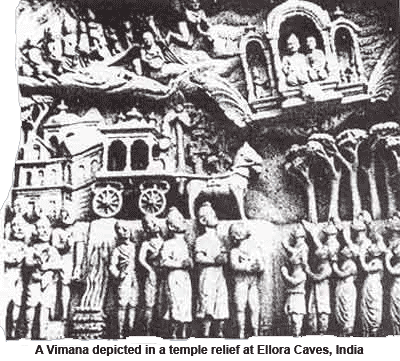
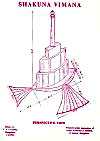
 "If
atomic warfare were
actually used in the distant past and not just imagined, there must
still exist some indications of a civilization advanced enough to
develop or even to know about atomic power. One does find in some of
the ancient writings of India some descriptions of advanced
scientific thinking which seemed anachronistic to the age from which
they come.
"If
atomic warfare were
actually used in the distant past and not just imagined, there must
still exist some indications of a civilization advanced enough to
develop or even to know about atomic power. One does find in some of
the ancient writings of India some descriptions of advanced
scientific thinking which seemed anachronistic to the age from which
they come.  Text and illustration
show forcefully that the gods were originally corporeal beings. But
how, and this question must be faced, did these gods reach the earth
through the atmosphere?
Text and illustration
show forcefully that the gods were originally corporeal beings. But
how, and this question must be faced, did these gods reach the earth
through the atmosphere? 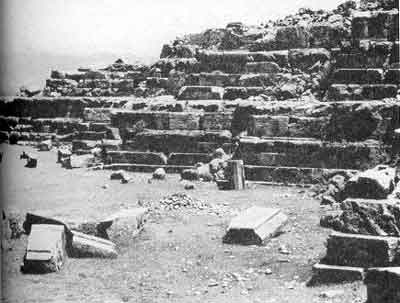 The catalogue is not short of data about the size of the machines,
which had storey, nor of their suitability for various purposes.
The catalogue is not short of data about the size of the machines,
which had storey, nor of their suitability for various purposes. 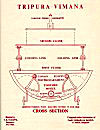
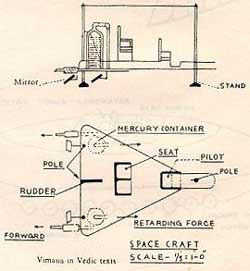 "It was as if the elements
had been unleashed. The sun spun round. Scorched by the incandescent
heat of the weapon, the world reeled in fever. Elephants were set on
fire by the heat and ran to and fro in a frenzy to seek protection
from the terrible violence.
"It was as if the elements
had been unleashed. The sun spun round. Scorched by the incandescent
heat of the weapon, the world reeled in fever. Elephants were set on
fire by the heat and ran to and fro in a frenzy to seek protection
from the terrible violence. 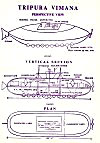
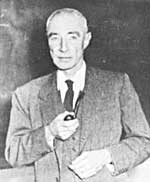
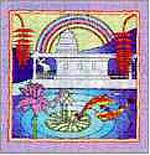 Discovered in 1981, the
well-fortified township of Dwaraka extended more than
half a mile from the shore and was built in six sectors along the
banks of a river before it became submerged.
Discovered in 1981, the
well-fortified township of Dwaraka extended more than
half a mile from the shore and was built in six sectors along the
banks of a river before it became submerged.